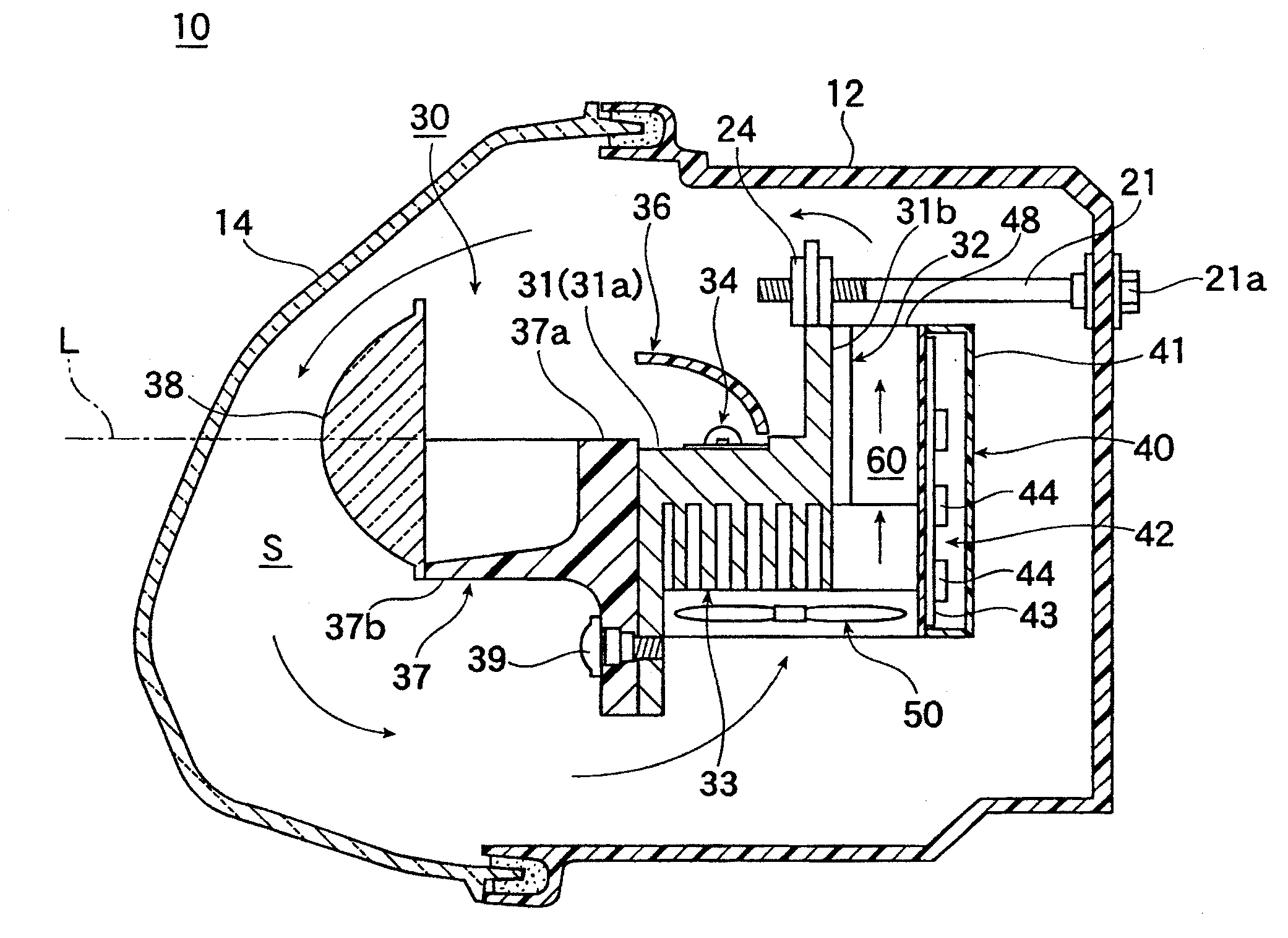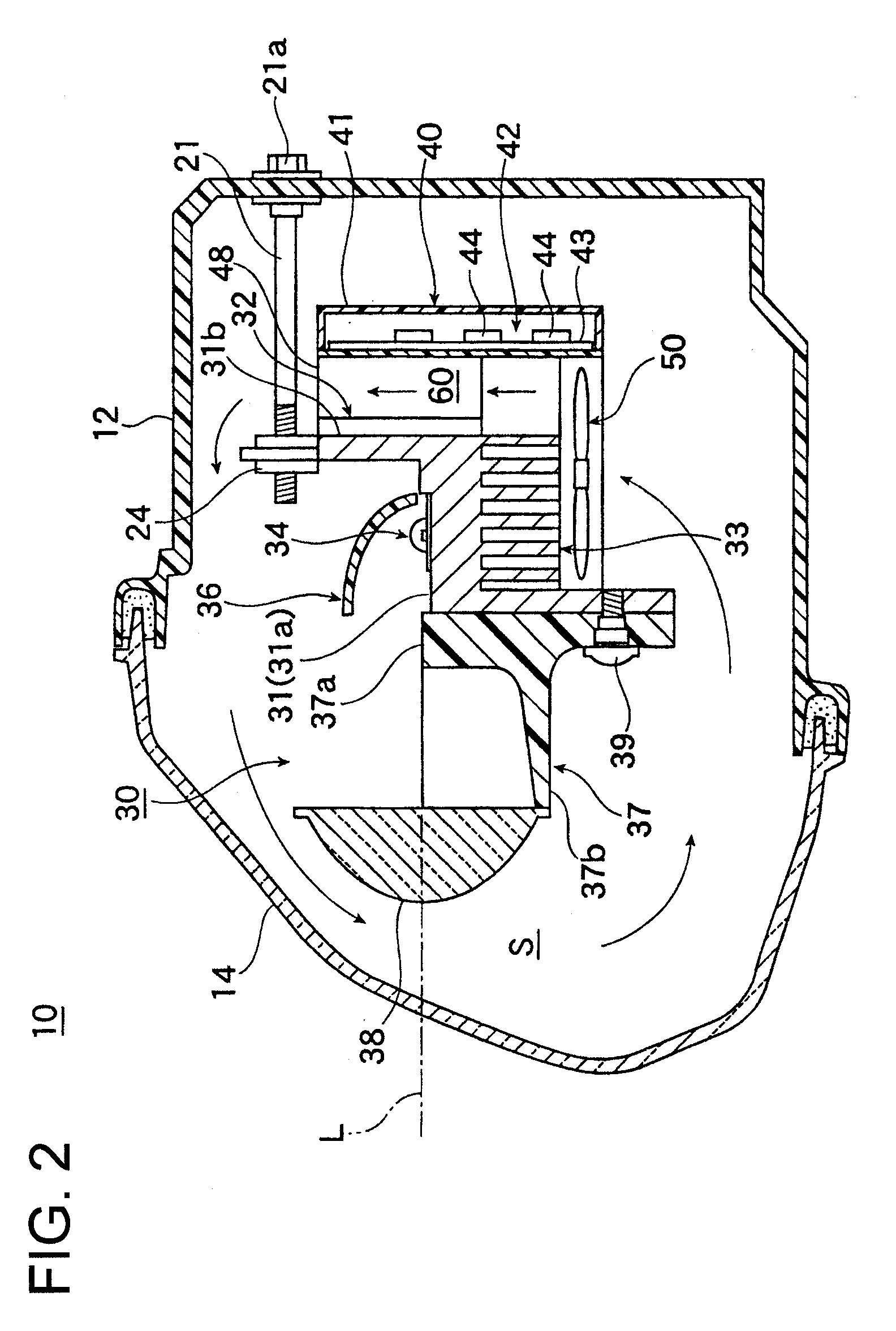Vehicular headlamp
a headlamp and headlamp technology, applied in the manufacture of electric discharge tubes/lamps, electrode systems, lighting and heating apparatuses, etc., can solve the problems of cumbersome work, difficult to effectively cool both the light-emitting element and the lighting circuit, and a more complex structure inside the lamp chamber. , to achieve the effect of reducing luminous efficiency, simple internal lamp chamber structure, and avoiding troubles
- Summary
- Abstract
- Description
- Claims
- Application Information
AI Technical Summary
Benefits of technology
Problems solved by technology
Method used
Image
Examples
Embodiment Construction
[0040]Hereinafter, embodiments of the invention will be described with reference to the drawings.
[0041]FIGS. 1 to 4 show a vehicular headlamp in accordance with one or more embodiments of the present invention. FIG. 1 is a frontal view of the headlamp. FIG. 2 is a vertical cross-sectional view of the headlamp (cross-sectional view along a line II-II) shown in FIG. 1. FIG. 3 is a vertical cross-sectional view of the headlamp (cross-sectional view along a line III-III shown) in FIG. 1. FIG. 4 is a horizontal cross-sectional view of the headlamp (cross-sectional view along a line IV-IV) shown in FIG. 1.
[0042]Referring to these drawings, in a vehicular headlamp 10, a lamp chamber S is formed by a lamp body 12 and a generally plain translucent cover (front cover) 14 that is attached to a front opening portion of the lamp body 12. A projector type light source unit 30 having a light-emitting element 34 as a light source is accommodated inside the lamp chamber S.
[0043]The light source unit...
PUM
 Login to View More
Login to View More Abstract
Description
Claims
Application Information
 Login to View More
Login to View More - R&D
- Intellectual Property
- Life Sciences
- Materials
- Tech Scout
- Unparalleled Data Quality
- Higher Quality Content
- 60% Fewer Hallucinations
Browse by: Latest US Patents, China's latest patents, Technical Efficacy Thesaurus, Application Domain, Technology Topic, Popular Technical Reports.
© 2025 PatSnap. All rights reserved.Legal|Privacy policy|Modern Slavery Act Transparency Statement|Sitemap|About US| Contact US: help@patsnap.com



